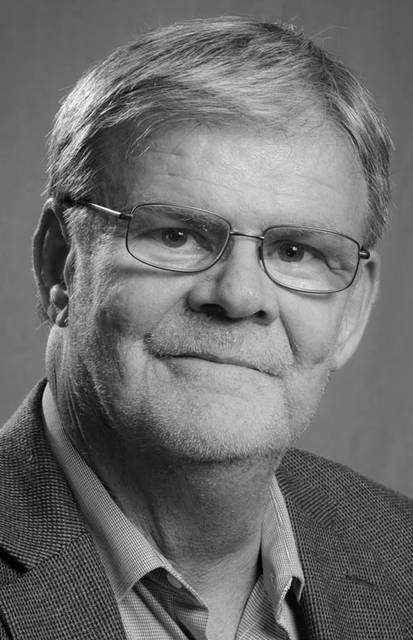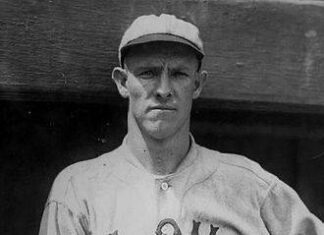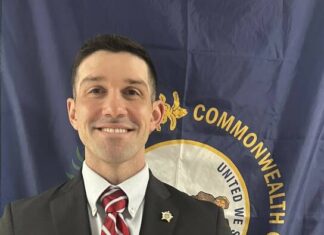The season is close to an end for the Cincinnati Reds – the year when the city and the franchise celebrated the 150th anniversary of professional baseball in Cincinnati, first played by the legendary Red Stockings.
We’ve told you many stories of the great players and great moments of the Reds’ long and storied history here.
Now it’s my turn to tell you about the exciting moments I have had in my lifetime while inside three ball parks – Crosley Field, Riverfront Stadium and, since 2003, Great American Ball Park.
Baseball has been my lifetime passion, from the very first Reds game I went to with my grandparents in June 1959 until Thursday of this week, the final home game of the 2019 season and the final game for Reds radio broadcaster Marty Brennaman before retiring after 46 seasons behind the mic.
You won’t find any Reds no-hitters on this list. The Reds have had plenty in my lifetime – Jim Maloney, George Culver, Tom Seaver, Tom Browning and Homer Bailey – but for a variety of reasons, I’ve never witnessed one in person.
Being on vacation on a North Carolina beach kept me away from Browning’s perfect game and I had to pass up another – Seaver’s only career no-hitter – because I had a date with a young woman at Wittenberg University that night.
Still, I’ve had some great experiences at the old ball orchard over the years. These are only stories where I was actually in the ball park when they happened. And it is by no means a complete list.
Here are a few of them:
Stan the Man’s Last Game at Crosley
It was Sept. 22, 1963. There were 25,706 fans in the stands – not a bad crowd for a Sunday afternoon at Crosley.
Most of them – like 10-year-old me – were there not so much to cheer on their Reds but to see one of the great legends of baseball, future Hall of Famer Stan Musial of the St. Louis Cardinals, play his last game in Cincinnati.
Nearly every Reds fan had seen Stan the Man in person during his 22-year career – all of them with the Cardinals.
Outside of my favorite Reds players – players like Frank Robinson, Vada Pinson and Jim Maloney – Musial was my hero.
To me, he seemed invincible, the greatest hitter alive who ended his career a week later with 3,630 base hits, 20 All Star game appearances and three National League Most Valuable player awards.
I admired Stan; so did my dad; and he managed to get tickets to the final game at Crosley.
Musial started the game in left field that day; the young Cincinnati Red at second base was a rookie named Pete Rose. I read many years later that Reds manager Fred Hutchinson, who had managed the Cardinals five years earlier, took Rose aside and pointed to Musial in the other dugout.
See that man over there? That’s Musial. If you want to be a great player in this game watch him and be like him.
The Reds honored Stan in ceremonies on the field before the game. But I really didn’t see much of him after that. He played left field, went 0-2 at the plate and then was taken out in favor of outfielder Mike Shannon.
But to this day, I remember it all so clearly. I remember seeing the man with the number 6 on his jersey, disappearing down the tunnel to the clubhouse.
The first of many baseball heroes to disappear. It hurt that day. Now, I’ve become used to it.
Hal King’s Moment in the Sun
On Sunday, July 1, 1973, the situation was grim for the Reds, who, the year before, had won the National League pennant, falling to the Oakland A’s in the World Series.
Hal King was a 29-year-old journeyman ballplayer who had bounced around the Major Leagues and landed that year in Cincinnati as a third-string catcher.
The Reds were playing a double-header that Sunday against the Los Angeles Dodgers, the team that lead the division by 11 games over the Reds.
In game one of the double-header, the Reds looked dead as a doornail, But they managed to get two men on base against future Hall of Fame pitcher Don Sutton.
Manager Sparky Anderson knew that King had some long-ball power, so he rolled the dice and sent King to the plate to hit for second-string catcher Bill Plummer.
The count was two balls and two strikes when Sutton decided he could get King to swing and miss on a screwball.
Well, King swung, but he didn’t miss.
The Riverfront Stadium went wild.
And the Reds went on to win game two.
No less an authority than Sparky was convinced that King’s game-winning home run would turn the Reds’ season around.
“I knew right then we were going to win the West,” Anderson told baseball writer John Erardi years later. “It was one of those things that when it happens you immediately think, ‘This is going to turn us around.’ “
Sparky was right.
The Reds went on to win the division, but didn’t make the World Series after losing to the Mets in the world championship series.
But they may have never had a chance had Hal King not been a hero that day.
Johnny Bench Night
After 16 years in Major League Baseball – all of them in a Reds uniform – the kid from Binger, Oklahoma, had had enough.
Catching takes a toll on the body, and even though he had been playing a lot of first and third base in his later years, he had achieved nearly every honor the game could bestow. He was clearly headed for a place of honor in Cooperstown.
So, on the night of Sept. 17, 1983, a full house of 53,790 fans showed up at Riverfront Stadium for Johnny Bench Night. Everyone of those fans was given a certificate saying he or she had been there.
My dad, Gene Wilkinson and I were there; as it turned out it would be the last game we would go to together before he passed away the next year. My dad is the one who taught me everything I knew about baseball, and was the consummate Reds fan.
He did have one picadillo – he insisted that his boyhood hero, Ernie Lombardi, former National League MVP and 1940 World Series champion was a better player than Bench.
Not that he didn’t like Bench; he did. But he insisted Ernie – “The Schnozz” – had a leg up on Johnny.
I just laughed at him and told him he was nuts.
Bench had been penciled in the line-up that night as catcher – the final time he would start a game behind the plate.
Dad and I were sitting in the green seats along the first baseline. I think we both knew that there was the potential that night for something major to happen.
We didn’t have to wait long.
Bench stepped to the plate in the third inning with Astros pitcher Mike Madden on the mound. Johnny swung from his heels and hammered one over the outfield wall – the 389th and final home run of his career.
The crowd went berserk. The noise was deafening. Everyone, even my dad, was up on his or her feet, jumping up and down. And my old man didn’t do a lot of jumping up and down.
Through the din, I would somehow hear him as a leaned over and said seven words to me that I will never forget.
You were right, Dad said, Bench is the greatest!
Rose Passes Ty Cobb
The Cincinnati Enquirer had assigned me to be part of a team that was to follow Rose, the Reds’ player-manager, as he closed in on Ty Cobb’s record of 4,191 career base hits.
We went to St. Louis for a series and then on to Chicago, where, on Sunday, Sept. 8, 1985, Rose singled to tie Cobb.
He may well have broken Cobb’s record right there in Wrigley. Subsequent reviews of Cobb’s records show that he had 4,189 base hits, but Major League Baseball still recognizes the 4,191 mark.
Well, some people still believe that Abner Doubleday invented the game.
Nonetheless, the skies above Wrigleyville opened up with one of the most violent thunderstorms I have ever seen. It seemed to last forever.
Finally, the game resumed, although it was getting dark and this was before Wrigley had lights.
Reds owner Marge Schott must have been back at her Indian Hill mansion cussing out the TV set when Rose came to the plate again. She wanted that record to be broken before a full house in Riverfront Stadium.
Schott got what she wanted – Rose walked.
Shortly thereafter the game was suspended because of darkness.
Back in Cincinnati, on Sept. 11, Rose put himself in the line-up, with a crowd of 47,237 in the stands, anxiously awaiting a base hit from their hero.
They did not have to wait long.
In the first inning, Rose, facing pitcher Eric Show of the Padres, stroked a flare that bounced on the Astroturf.
The celebration on the field lasted for seven minutes. Rose was mobbed by his teammates; and, with tears in his eyes, embraced his son, Pete Jr. at first base. The crowd was beyond ecstatic.
The following August, he announced his would no longer be a player-manager, just a manager.
He finished his career with 4,256 hits.
It is very likely to be one of those records that will last forever.
But he is a former player who will likely not be honored with a plaque in Cooperstown, at least not during his lifetime.
And he has no one to blame for that but himself.
The Day Glenn Braggs May Have Saved The 1990 Season For the Reds
Some people remember the Reds outfielder as the guy who was so strong that he actually once snapped a bat in half on a swing and miss.
But the fact is that Braggs made a catch in the sixth and final game of the 1990 National League Championship series that may – I emphasize, may – have made it possible for the Reds to go on to the World Series that year, where they swept the highly favored Oakland A’s.
Here’s what happened:
The Reds, playing the Pirates, were leading 2-1 in the ninth inning. The Pirates were at the plate. Randy Myers, one of the Reds’ trio of “Nasty Boys” relievers was on the mound.
There was one out. The Pirates. Carmelo Martinez, a big strong, dude, walked to the plate. Braggs was patrolling right field.
Martinez hit a monstrous opposite field smash to right field, which looked like it was going to just barely skip over the right field wall for a game-tying home run.
Braggs leapt, reached above the wall, and snagged the ball for the second out of the inning.
Braggs is six-foot, three-inches tall. If he was only six feet, he might not have made that catch.
I witnessed the catch from my green seat on the third base side. Since then, I have watched replays of the catch countless times. There is no question in my mind it would have been a home run.
It may well have been the most significant outfield catch in the history of the Reds.
Jay Bruce Home Run Clinches Division Crown
Reds fans could smell a trip to the post-season coming in September 2010, but it took a while to nail it down.
Reds outfielder Jay Bruce ended the anxiety and nail-biting with one swing of the bat on Sept. 28, 2010.
The Reds and the Houston Astros were tied 2-2 in the bottom of the ninth when Bruce stepped to the plate and hammered one well over the centerfield wall, in the deepest part of the ball park.
The reaction of the crowd was electric – the cheering and dancing in the aisles went on for what seemed like forever.
The entire Reds team mobbed Bruce at home plate, and celebrated on the field before running off to the clubhouse to break out the champagne.
Bruce had given the Reds their first National League Central Division championship since 1995.
The popular young outfielder from Beaumont, Texas, was seven years old the last time it happened.
Howard Wilkinson is 91.7 WVXU’s senior political analyst. His “Tales from the Trail” column appears on wvxu.org every Friday and gives a behind-the-scenes look at Wilkinson’s 45 years of covering the campaigns, personalities, scandals and business of politics on a local, state and national level.






